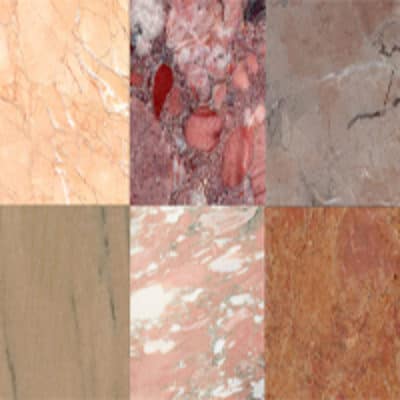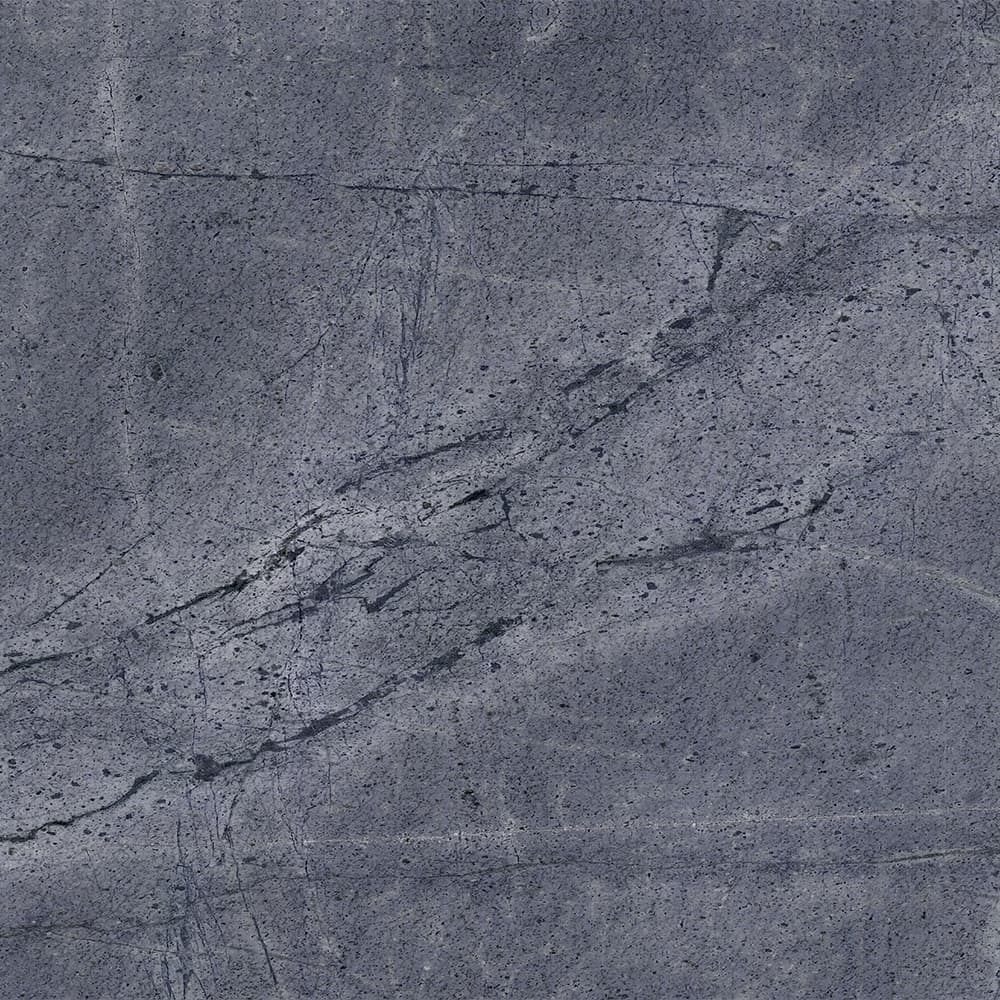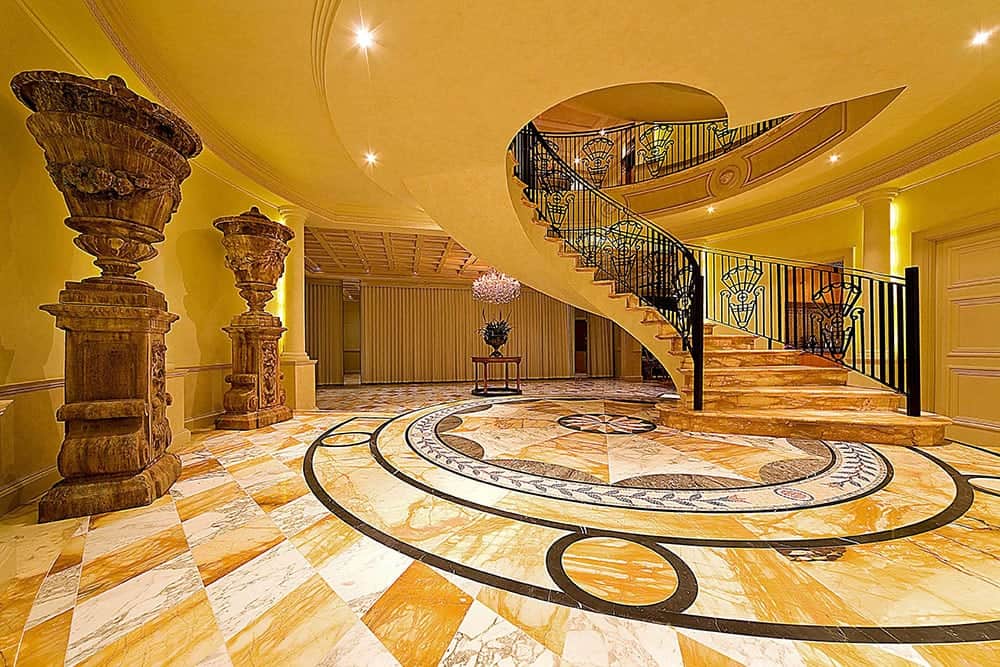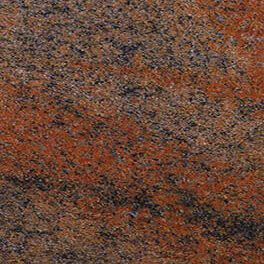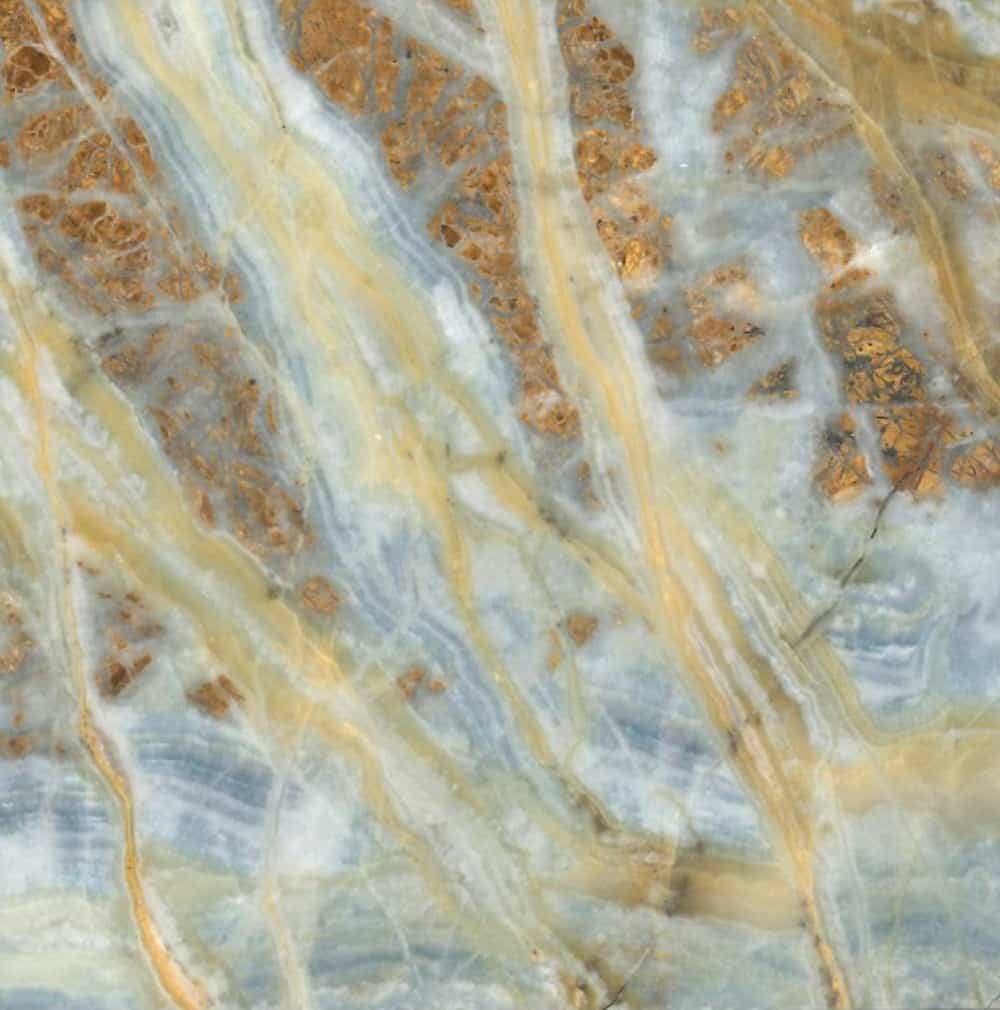Pink
Collections
Marble is a durable material with a long life span, and more importantly, it makes maintenance a walk in the park. White marble provides that clean and luxurious look. This is why many people decide to incorporate it into their home design. Companies quite often go with white marble for their building design, because it makes the interior look professional and trustworthy. Among the many benefits of installing white marble in a home, the breathtaking aesthetics and increased value of the property are the most prominent.
Although very beautiful, from a geologist’s point of view, white marble is nothing more than a calcium-rich stone. Architects have been using it for centuries to decorate the interiors of homes and office buildings. One of its most important characteristics is that it changes over time. Each piece that you add to your home will get its own character over time. Those imperfections are exactly what makes it desirable and even more luxurious.
The living room floor – one of the most common uses is as white marble floor tiles. You will quite often see these tiles in living rooms and also in bathrooms. It turns the living room into the brightest room in the house, giving it an elegant marble base.
Interior and exterior wall tiles – white marble tiles can be put on interior walls. Some architects used white marble to create beautiful ventilated facades. Besides the good looks, marble is a great energy-saving solution.
Staircases – white marble staircases provide security and beauty.
Bathroom – marble used in a bathroom opens up space and adds a dose of exclusivity to it.
Kitchen benchtops – a marble benchtop is a perfectly elegant addition to a kitchen, especially if it is white.
Find out more about the different types of white marble and their best uses in Australia
Brilliant colours and veins, origin, rarity, and history are what make Calacatta Marble slabs especially desirable. This natural stone evokes prestige like no other in the stark contrast of its dark and gold veins against a vivid white background or field. It seems to convey both light and life to the space it inhabits, creating nothing but a sense of luxury and exclusivity. Perhaps this is why it carries the badge of being Michelangelo’s favourite stone to work on.
More special still is Calacatta Borghini. While not all slabs are cut the same, Calacatta Marble is exceptionally rare and sought after. No other Calacatta possesses gold veins and honey hues than Borghini. In addition, because it is extracted from inside the mountain itself—as opposed to the more-common extraction area at the mountainside—production is very limited, resulting in its very high marketplace value.


Oftentimes, when people speak of marble, they usually think or confuse two varieties: Calacatta and Carrara. Perhaps the confusion lies in their origin—both are quarried from the same Italian region of Carrara. However, their similarity stops there.
Calacatta Marble is defined by its smooth and brilliant white field. As the field turns a little greyer and a little muddier, the marble ventures into Carrara territory. In addition, while Calacatta’s veining is bold, dark, and thick with gold and honey splashes, Carrara’s are more light and feathery, ranging from grey to blue.
Finally, Carrara is more common and readily available than Calacatta Marble, making the former more affordable and the latter considered luxury.
It must be made known that not every Calacatta marble benchtop is expensive and the material varies greatly, catering for a wide range of customers and their budgets. The material ranges in price from $800/m2 + GST to $2,500/m2 + GST. The below lists a few factors that play a role in determining the price of Calacatta:
Generally speaking, in Italy the Calacatta material is graded and priced accordingly based on its visual appearance. The slabs with a brighter white background as opposed to milky white or grey and prominent evenly distributed grey veins are highly desirable and therefore are sold for a premium on the market.
The thickness of the slabs in questions will strongly determine the price charged. For example the conventional 2cm or 20mm stone slabs are the most economical and clients usually build up these materials by mitering the edges to appear thicker. As the stone thickness increases to say 3cm – 5cm the price unfortunately does too.
The material or supply only price is only a small piece of the pie and installation must also be factored into the overall price. There are many factors that will change the Installation price such as access to the property. Poor access from walking up several flights of stairs will result in multiple installers having to carry the piece in. Similarly, the size of the piece will also affect heavily the weight of the piece and how many installers are required to lift and fit.
The finish of the Calacatta marble slabs can also impact the cost of the stone. A honed or matte finish on the stone is the most commonly used finish for Kitchen benchtops and shows off the natural beauty and veining of the stone more so than others. A polished or gloss finish is usually appropriate on vertical non useable surfaces like bathroom walls or feature walls. There are numerous other finishes which are more difficult to achieve and require machinery to do so. These can include Sandblasting, bush hammering, acid etching and brushing. As these finishes are more difficult to achieve, they have the tendency to drive prices up of the stone.
Patination is natural in authentic marble. However, marble care and maintenance actually require little effort provided that your stone slabs are finished with a high-quality sealer, which prevents liquids from seeping in and staining the surface. Depending on use, resealing is only usually required every two to five years.
Acids like citrus juices, vinegar, or wine can etch finished marble, but these etchings can be removed by scrubbing them with gentle kitchen cleaners.
Over time, these marble slabs can be re-sanded and re-polished to maintain their immaculate condition.
Once the marble has been sealed, it is easy to clean. Only a clean damp cloth and some gentle soap are usually required. Acidic and strong cleaners are not recommended as they adversely affect the sealing and/or etch the marble itself.
Liquids that stain, such as juices and wine, should be wiped off as soon as possible with a clean dry cloth. Water should not be left on the surface as well to prevent discolouration. Oily spills can be completely soaked up with clean paper towels. Talcum powder or flour is an excellent tool to draw out any remaining liquid.
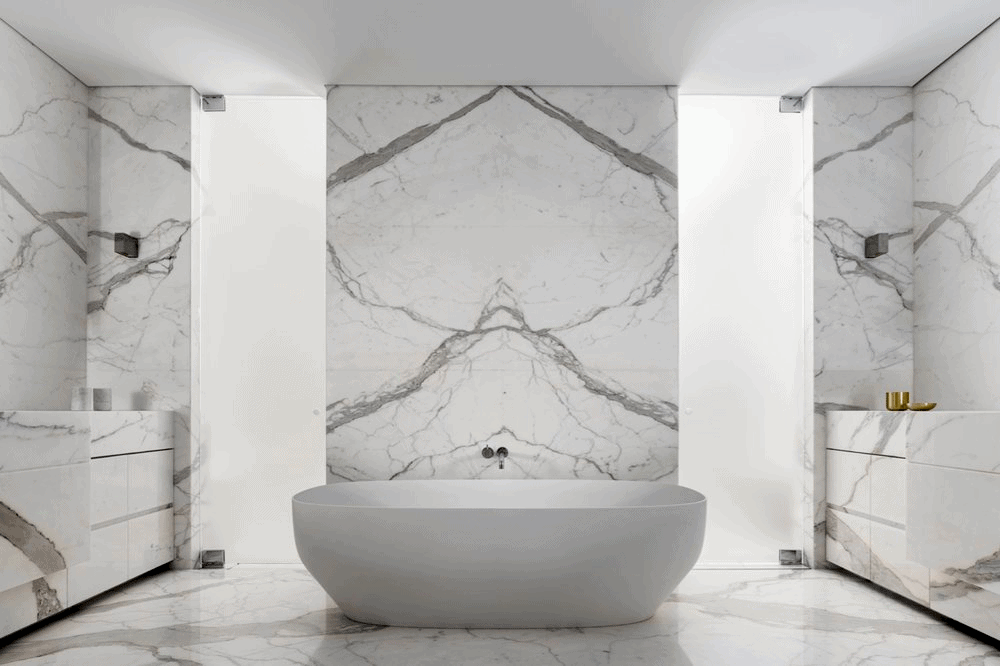
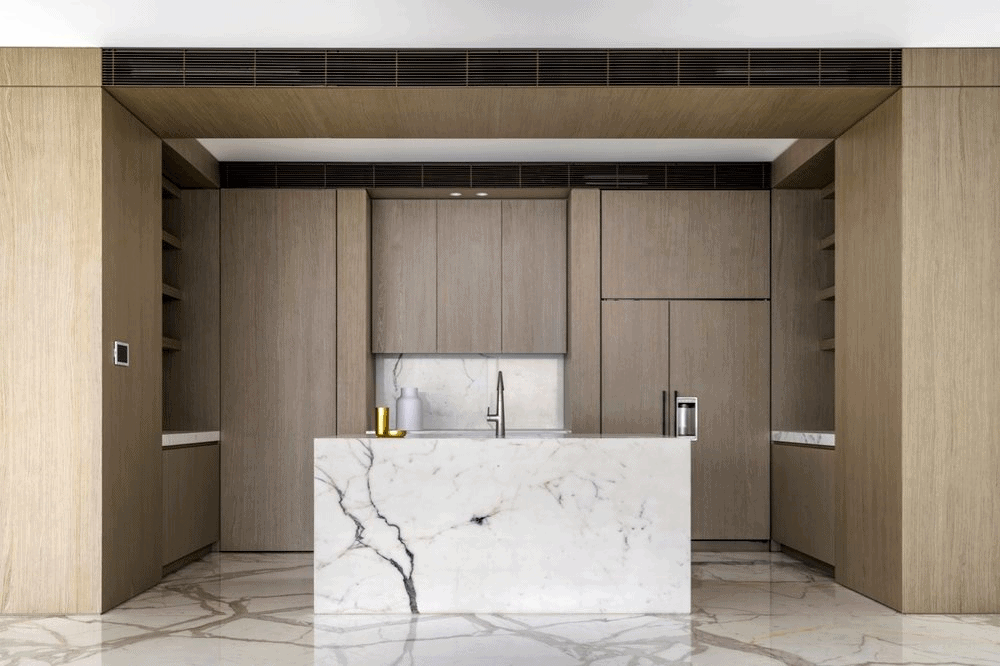
If you’re enamoured by the most luxurious marble slabs Italy can offer and seek Calacatta in Sydney, it is easily available through the city’s top natural stone merchants. But if you want to ensure that your marble designs and fixtures make the boldest of statements in uniqueness and exclusivity, Calacatta Borghini is the only choice there is. Few in the industry and fewer still in Sydney—indeed the whole country—have access.
Fortunately, Euro Marble has the opportunity to source this rarest stone from the quarries of Borghini, Italy, to your home or business in Sydney. Euro Marble has been providing a superior range of natural stone products and services to Australian residential and commercial sectors for the past 30 years, establishing us as industry leaders. Our team of craftsmen are renowned not only for skilfully creating bespoke designs of superior quality but for excellent service as well.
Talk to us today for any enquiry and/or request. We would be happy to assist you.
For marble experts, Calacatta marble is at the very top of the line. It originates from the mecca of marble, Carrara, Italy giving it a natural stone pedigree. It has been a favourite of Renaissance masters, gracing the world’s renowned castles, cathedrals, and churches, and possesses a most desirable colour and veining, so one can’t go wrong with Calacatta.
At Euro Marble, we source our Calacatta Marble from one of the world’s best and time-honoured Italian quarries—Borghini Quarry. Hence, the exclusive Calacatta Borghini.
Calacatta Borghini is a smooth white marble with bold grey, gold, or honey veins. This natural stone gets its identity and rarity from its crisp white colour where the whiter the marble, the rarer it is. Slabs of more consistent patterns fetch more allure, perfect for staircases, floors, facings, even small decorations, as well as countertops for kitchens and bathrooms.
What type of rock is granite?
Granite is an extremely hard, tough rock that has made it a popular stone for construction. It’s a natural and “igneous” rock that is between 20 and 60 percent quartz by volume, and also contains feldspar and mica. It also has a coarse grain, giving rise to the name “granite.”
Granite can withstand a great deal of pressure and it resists heat and abrasion, making it ideal for commercial and residential construction. It can also be polished to a brilliant shine, making it both functional and attractive.
Due to its hard makeup, granite is ideal for kitchen bench tops, bathroom vanities, and even wall tiles, floor tiles and pavers.
How does granite become red?
Granite comes in different colors depending on the minerals that make up its composition.There are differing amounts of minerals in granite depending on the original source of molten rock that cooled to create it.
Red granite features potassium feldspar that creates the reddish tone, or it may be colored by iron oxide in its grains, in the way that metal turns red when rusted.
Red Granite Slabs: These are ideal for use in the kitchen, such as on an island or benchtop. Granite can withstand heat, scratches, and daily use and abuse in the kitchen. A slab is also ideal for flooring, as it’s easy to keep clean and in good condition. Finally, slabs are perfect in an outdoor setting like a patio. The richness of a red granite slab will complement other decor colors like tans, browns or even blacks. For instance, a choice such as our Multicolour Red has deep tones of cinnamon and fire orange, with onyx wash in the background. The variety of colours in this granite can be matched with a variety of decor and highlight colours.
Red Granite Tiles: Perfect for flooring and so much more. The traditional use of granite tiles has been for floors, as they are durable and easy to maintain. But picture red granite tiles used as a wallcovering, adding depth and beauty to a space such as a bathroom. Red granite creates a richness wherever the tiles are installed. Our Jacaranda Red has tones of amber and fire with grey and white nuances, the perfect touch for tiling in a bathroom, entryway or kitchen.
Red Granite Countertops: Natural stone benchtops are a natural choice for kitchen benchtops and bathroom vanities. Granite is scratch resistant, helping to resist bacteria. Granite is also heat resistant and durable. The rich tones of red granite make it an easy choice to add to a kitchen or bathroom. Our Paradiso Dark red granite has a unique blend of dark pink with grey, black and white highlights. It’s easy to match with a multitude of other decor choices in your home.
Black granite is quite often seen in home and office building designs. Thanks to its durability and luxurious look, it is one of the most sought after stones in architecture. While it is found in many colours, the black makes the granite ethereal and a suitable addition to both traditional and modern decor. It has a unique magic power to transform any space and deliver a sophisticated and elegant experience. If you want your home to deliver a powerful statement, black granite can help you achieve this.
Black granite is a naturally occurring stone. It has been recognised as a decorative material by ancient cultures. For instance, Egyptians used black granite to tile and decorate the Great Pyramid at Giza. Time has proven it has properties that make it a valuable building material. Polished black granite is known for its ability to reflect the sun with magnificent effects. It is a difficult material to come by, which is reflected in its price. It occurs in a pitch black colour, but there are also other variations that incorporate grey, blue, leather brown and orange colours.
Kitchen benchtops: being one of the most durable stones, able to withstand acid and bleach spills, black granite is often seen in kitchens as a benchtop stone. Being black makes it easy to incorporate with other wooden kitchen elements.
Black granite wall and floor tiles: different textures allow black granite tiles to be incorporated into different home designs. The visual effect of the contrast it creates makes the rooms more appealing and luxurious.
Bathroom walls and floor: the stunning visual effect of black granite against white elements is able to transform any bathroom into a luscious space.
